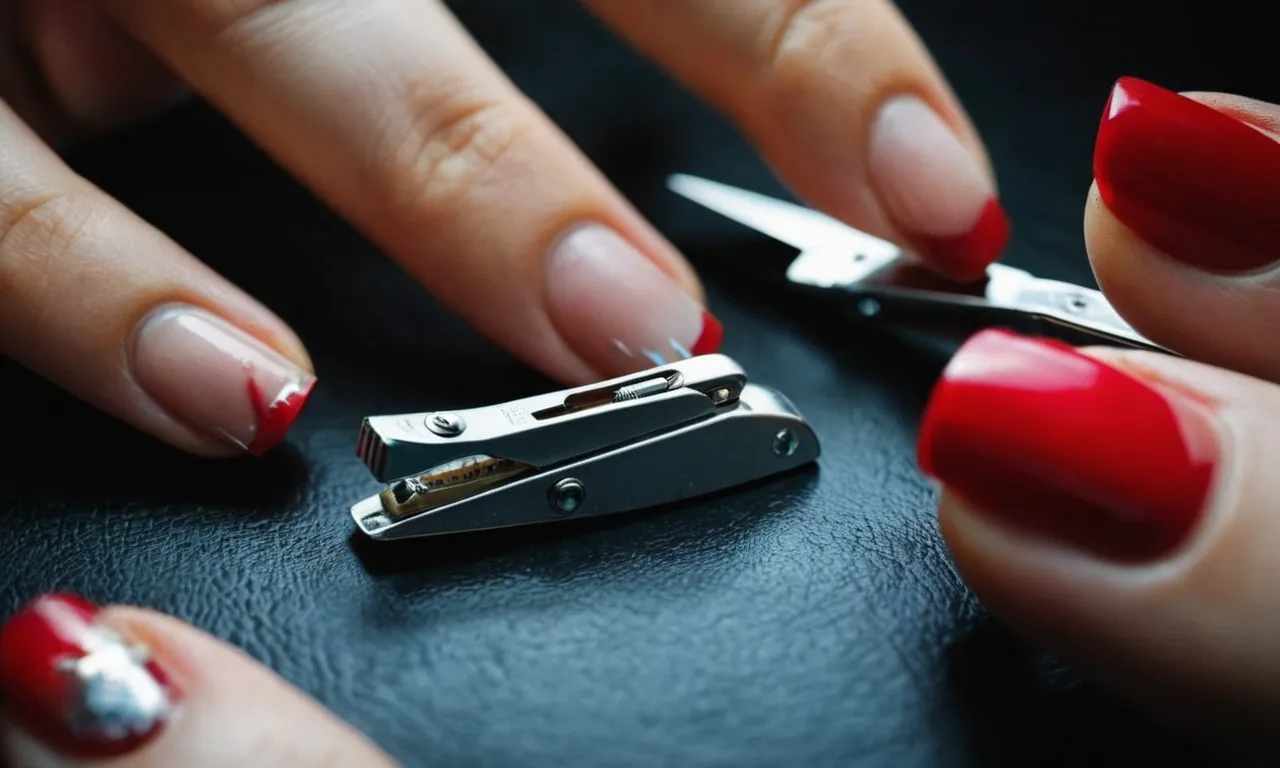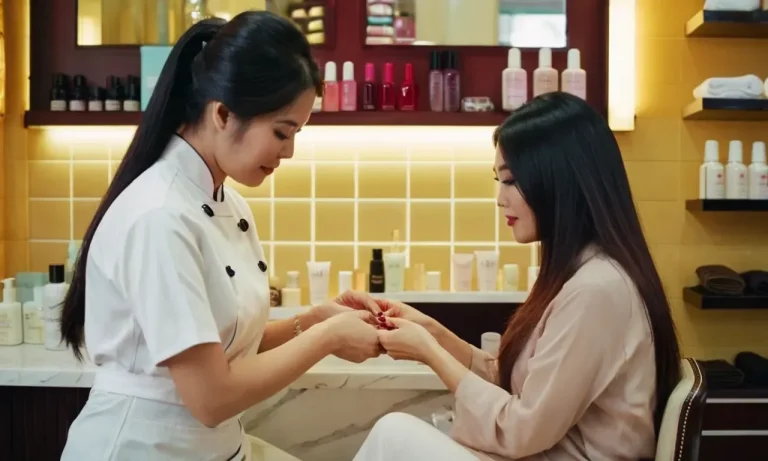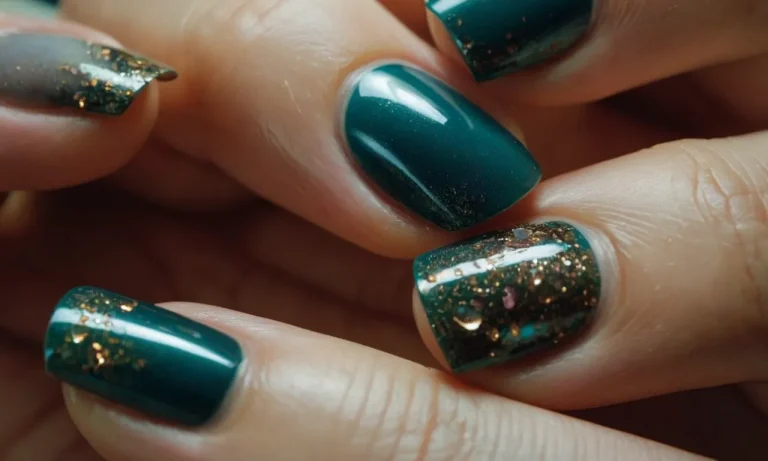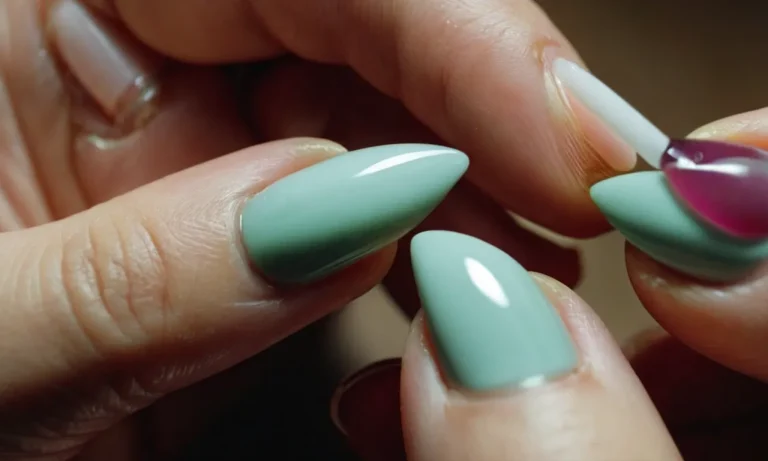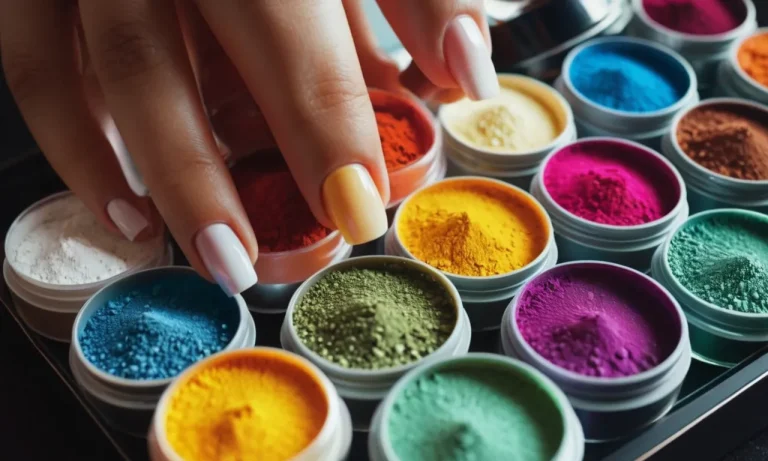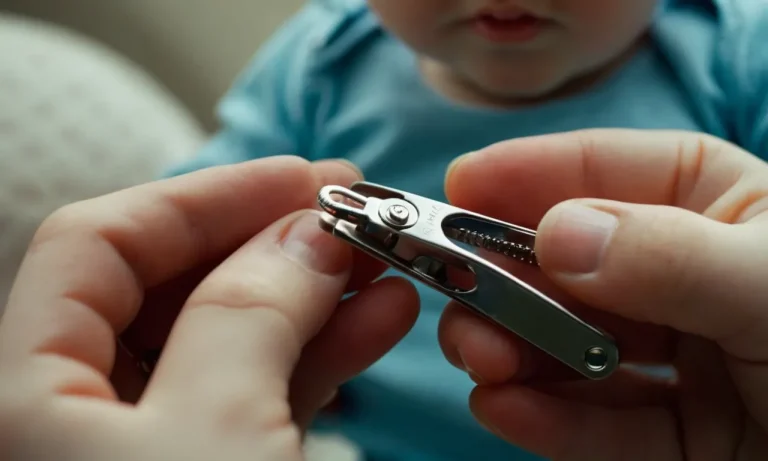Cutting Your Nails Too Short: Why It Happens And How To Stop The Anxiety
Cutting your nails too short can be painful and lead to unpleasant feelings of anxiety afterwards. Many people have experienced this issue before, so know that you’re not alone. In this comprehensive guide, we’ll explore the reasons why you may be cutting your nails too short, how it can make you feel anxious, and most importantly – what you can do to break the habit and stop the anxiety.
If you’re short on time, here’s a quick answer: Try filing your nails instead of cutting them, leave them slightly longer, and moisturize your nails and cuticles to reduce anxiety about the pain.
What Causes You to Cut Your Nails Too Short?
Cutting your nails too short can be anxiety-inducing. While it may seem like an insignificant issue, short nails that expose the nail beds can lead to pain, infection, and repeated cycles of biting and picking.
Understanding the common causes behind this habit is the first step in overcoming nail-cutting anxiety.
Rushing the Process
One of the most common reasons people end up with painfully short nails is simply rushing through the nail-trimming process. Trying to clip your nails while distracted or in a hurry often leads to taking off more than intended. Slow down and devote full attention to carefully trimming each nail.
Don’t try to multi-task!
Using the Wrong Tools
Using nail clippers that don’t fit your nail size or shape properly can make accurate trimming difficult. Invest in a high-quality nail clipper designed specifically for your nail type. Proper tools, combined with patience in their use, can prevent many a nail-cutting mishap.
Having Naturally Brittle Nails
Those with brittle nails are especially prone to taking off more than they bargained for. Brittle nails break easily, sometimes below the nail bed. To minimize unwanted shortening, try using a glass nail file to gently shape nails instead of clippers when they are extra brittle.
Ask your dermatologist about supplements like biotin that research[1] shows may help strengthen fragile nails.
When nail cutting anxiety strikes, remember you’re not alone. Lots of people deal with this issue. The key is being patient with yourself, using proper tools and techniques suited to your nails, and avoiding distraction while trimming.
With some mindfulness, you can stop excessive shortening and enjoy beautifully trimmed, healthy nails.
How Cutting Nails Too Short Leads to Anxiety
Pain and Discomfort
Cutting your nails too short can lead to significant pain and discomfort. The quick, or the skin under the nail, is full of nerve endings. When you cut into the quick, it causes bleeding and exposes sensitive nerve endings, resulting in throbbing pain (University Health News, 2022).
This pain can last for several days as the nail grows out. It may cause trouble with normal activities like typing, cooking, or even sleeping.
In addition to pain in the affected nail, cutting nails too short can also lead to infection if bacteria enters the open cuticle. Signs of infection include redness, swelling, drainage, and a foul odor (Cleveland Clinic, 2021).
If left untreated, the infection can spread and become serious, requiring oral antibiotics. This possibility often creates more anxiety.
Appearance and Self-Consciousness
Having a painful, infected, or misshapen nail can also lead to self-consciousness about appearance. Short nails may look “stubby” or just different than normal. This can cause anxiety in social situations when people notice your nails. Embarrassment and comparisons to social norms often follow.
Nail biting and picking can also result from the stress and anxiety caused by having short, injured nails in the first place. This continous cycle exacerbates the issue. Seeking treatment from a podiatrist or mental health professional may help break this habit (Healthline, 2023).
Fear of Infection
As mentioned under “Pain and Discomfort”, having an open cuticle after cutting your nail too short can allow bacteria and fungi to enter and infect the nail bed. Common infections include paranhychia and onychomycosis (American Academy of Dermatology, 2021).
Symptoms like swelling, redness drainage, tenderness, and nail deformities cause anxiety due to fear of the infection spreading or indication a larger health issue.
Though usually treatable with topical or oral medications, nail infections can be persistent and difficult to cure fully. This can lead to ongoing anxiety and stress even after starting treatment, especially in those prone to worrying.
Working closely with your doctor and expressing your anxieties is key to overcoming them.
Tips to Stop Cutting Nails Too Short
Take Your Time and Be Mindful
Rushing while trimming your nails often leads to taking off more than intended. Go slowly, pay attention, and trim just a small amount at a time. Checking the length after every couple of snips can help prevent overcutting.
Using adequate lighting, trimming nails after a shower when they are softer, and regularly filing with a glass file also allows better control.
Use a Glass File
Trade metal nail files for glass nail files, which have finer grit that smoothly seals the nail’s edge without weakness or peeling. The gentler filing motion better protects nails already bitten down. It also reduces pressure to continue shortening them.
Even small glass file strokes each day keep nail edges neat and decrease anxiety about length.
Moisturize Nails and Cuticles
Moisturized nails and cuticles have a tidier, healthier look that makes overtrimming less tempting. Using a thick cuticle oil or cream daily softens the skin around nails and makes it easier to push back without scissors.
Massage in vitamin E oil, petroleum jelly, or a moisturizing product containing coconut, avocado or olive oil. Well-hydrated nails also chip and peel less, focusing attention on growth instead of problems.
Try a Shorter Nail Style
Embracing nails trimmed shorter can curb the urge to continually bite or clip them. Clean hands and neatly filed, shapely nails – even short ones – can still be attractive. Using bright colors or nail art creates a stylish look at any length.
Preventing painful splits or ingrown edges offers motivation to stop excess trimming. Achievable maintenance is also easier with a shorter length until the habit passes.
See a Doctor if Needed
Sometimes anxiety and perfectionism surrounding nail appearance cross into body-focused repetitive behavior, needing a doctor’s advice to overcome. Counseling regarding underlying emotional issues or cognitive behavioral therapy can help halt chronic overgrooming tendencies.
Temporary use of bandages or false nails may also curb scraping already short nails while making underlying changes. Seeking professional support offers hope for healthy nails and self-image.
Coping with Anxiety After Cutting Nails Too Short
Treat the Pain
If you cut your nails too short and there is pain or bleeding, be sure to clean and disinfect the area to prevent infection. You can apply an antiseptic ointment and cover with a bandage. Taking an over-the-counter pain reliever like ibuprofen or acetaminophen can also provide relief.
Some people find that ice helps numb sore nail beds.
Practice Relaxation Techniques
Anxiety after cutting your nails too short is common. When you start feeling anxious, try some relaxation techniques like deep breathing or progressive muscle relaxation to calm yourself. If your mind starts racing, bring your focus back to your breath.
Anxiety about your nails often lessens over time, so remind yourself that the intense anxiety you feel will pass.
Distract Yourself
Keeping your mind occupied with positive distractions can prevent obsessive thoughts about your nails. Try calling a friend, watching a funny movie, reading an engrossing book, playing mobile games, or doing a hobby you enjoy. Even light housework like folding laundry can shift your focus.
It’s amazing how distracting yourself for even 15 minutes can improve your mood.
Remind Yourself It’s Temporary
It’s easy to catastrophize when you cut your nails too short, but try to remind yourself that the pain and discomfort are only temporary. For most people, nail beds heal within a few days and nails will regrow in about 6 months.
While waiting for your nails to recover, use this as an opportunity to take better care of your nails by moisturizing cuticles, filing instead of clipping, and allowing your nails to grow out more before trimming again.
Conclusion
Cutting your nails too short can happen occasionally to anyone, but if it’s becoming a regular problem leading to anxiety, take steps to change your nail care routine. With some mindfulness, proper tools and techniques, and nail moisturizing, you can stop excessively short nails.
If anxiety persists, don’t hesitate to seek help from a doctor or counselor. Just remember – nails will grow back and the discomfort is only temporary!
Taking a little extra care with your nails can prevent a lot of unnecessary anxiety in the long run. Be kind to yourself and don’t stress if you make the occasional mistake. With the right strategies, you can cut this habit (and anxiety!) short.

